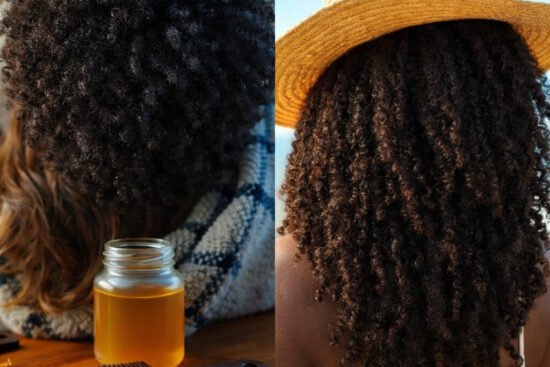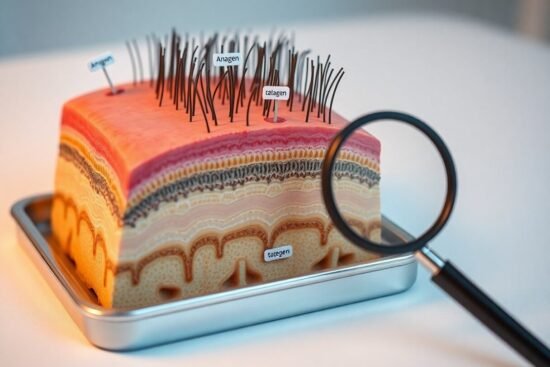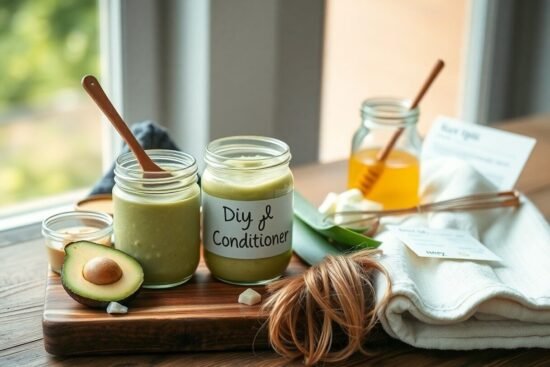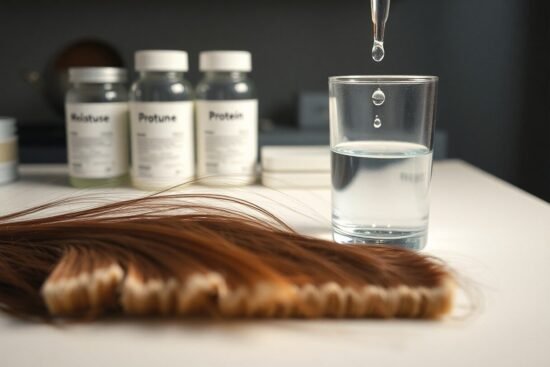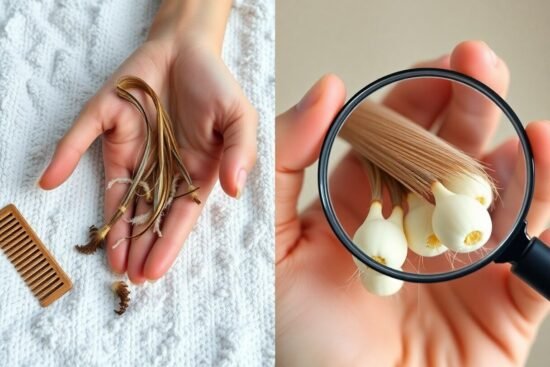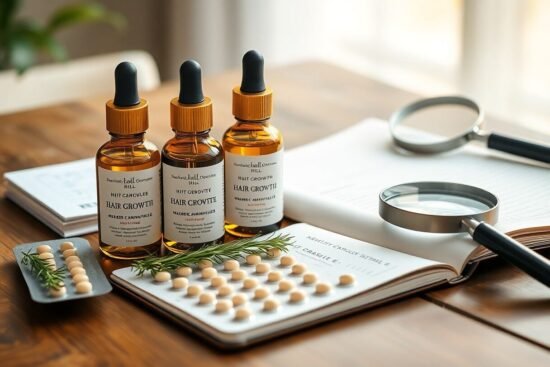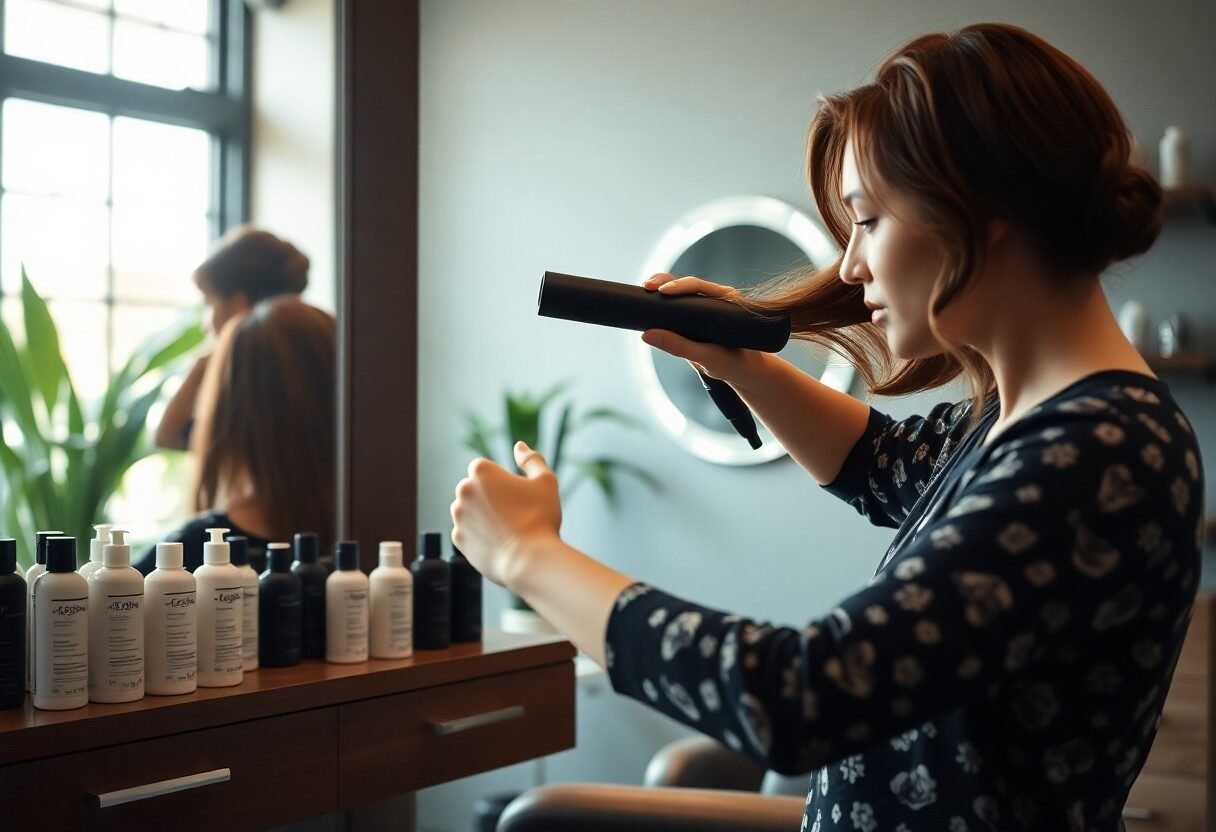
It’s important to recognize the potential harms of heat styling on your hair, as excessive exposure can lead to unwanted damage and dryness. In this blog post, I’ll share key tips and techniques that will help you minimize damage while still achieving that sleek, polished look you desire. By incorporating protective measures into your routine, you can maintain your hair’s health and vibrancy even when using styling tools. Let’s investigate the best practices for heat styling that will keep your locks looking luscious!
Key Takeaways:
- Always apply a heat protectant spray or serum before styling to create a barrier against heat damage.
- Choose the appropriate heat setting for your hair type; finer hair requires lower temperatures while thicker hair can tolerate higher heat.
- Limit the frequency of heat styling sessions to allow your hair time to recover and prevent excessive damage.
- Incorporate regular deep conditioning treatments to maintain hydration and elasticity in your hair.
- Invest in high-quality tools with even heat distribution to minimize hot spots that can lead to damage.
- Consider air-drying your hair whenever possible, and use heat styling only for special occasions.
- Learn different styling techniques that require minimal heat, such as braiding or using foam rollers for waves and curls.

The Science of Heat Damage: How Styling Tools Affect Your Hair
Understanding the science behind heat damage is vital for anyone who frequently uses styling tools. Heat styling tools can reach temperatures exceeding 400°F, resulting in significant alterations to your hair’s structure. Damage occurs on both a cellular and molecular level, which can lead to weakened strands, frizz, and split ends if proper precautions are not taken.
The Biological Makeup of Hair
Your hair is primarily composed of a protein called keratin, which provides strength and resilience. Additionally, hair contains water, lipids, and pigments that contribute to its overall health and appearance. This intricate composition makes hair susceptible to changes caused by heat exposure, affecting its ability to maintain hydration and flexibility.
How Heat Alterations Lead to Damage
When hair is exposed to high temperatures, the heat transforms the internal structure of keratin. This process can cause the hair shaft to lose moisture and become brittle. Over time, repeated exposure to heat can lead to structural breakdown, resulting in weak and damaged hair.
Heat can denature the proteins within the hair fiber. When keratin loses its natural bonds due to high temperatures, it can’t return to its original form. As the moisture evaporates, hair becomes dry and prone to breakage. I’ve noticed that maintaining healthy hair becomes even more challenging as the cumulative effects of heat styling compound over time, leading to a less vibrant and resilient mane. Regular use of protective products and heat settings can help mitigate these detrimental effects but being aware of how heat alters your hair’s biology is the first step to smarter styling practices.
Essential Pre-Styling Preparations for Optimal Protection
Incorporating effective pre-styling preparations can significantly enhance your hair’s resilience against heat damage. Before reaching for your flat iron or curling wand, ensure you start with thoroughly clean, slightly damp hair. This sets the stage for optimal heat protection and styling results while minimizing unnecessary stress on your strands.
The Role of Heat Protectants
Heat protectants serve as a vital barrier between your hair and the intense temperatures generated by styling tools. Applying a heat protectant spray or serum not only helps to shield against heat damage but also improves your hair’s overall texture and manageability. Look for products that contain ingredients like silicones, which coat the hair, or natural oils, which add moisture.
Importance of Hair Conditioning
Conditioning your hair regularly is a key strategy for maintaining its health and resilience against heat styling. Well-hydrated hair is less susceptible to damage as it possesses greater elasticity and strength. I incorporate both rinse-out and leave-in conditioners into my hair care routine to ensure maximum hydration, ultimately enhancing my hair’s ability to withstand the rigors of heat styling.
Beyond basic conditioning, using products enriched with proteins can bolster the structural integrity of your hair. Ingredients such as keratin can fortify your strands, reducing the risk of breakage during styling. By focusing on hydration and strengthening your hair with conditioning treatments, you create a solid foundation that not only combats potential heat damage but also promotes vibrant, healthy hair in the long run.
Choosing the Right Tools: What to Look For
Selecting the right heat styling tools can make all the difference in maintaining healthy hair. Look for tools that provide a range of heat settings to suit your hair type and styling needs. Opt for brands known for quality and durability, ensuring that the tool can withstand regular use. Additional features, like a rapid heat-up time and an automatic shut-off for safety, can also enhance your styling experience. Overall, investing in well-reviewed tools can help protect your hair from unnecessary damage while achieving your desired looks.
Heat Settings: Balancing Heat and Style
Finding the right heat setting is important for minimizing damage to your hair. For fine or damaged strands, lower temperatures of around 300°F are often sufficient, while thicker hair may need closer to 400°F for effective styling. Adjusting the heat not only reduces the risk of burns or breakage but also allows you to achieve your style of choice without compromising hair health. Always start with a lower setting to gauge how your hair responds before increasing the temperature.
Material Matter: Ceramic vs. Titanium
The material of your styling tools greatly influences their thermal performance and the health of your hair. Ceramic tools distribute heat evenly, which minimizes hot spots that can lead to damage. These are ideal for most hair types as they help maintain a consistent temperature. On the other hand, titanium tools heat up rapidly and are perfect for thick or coarse hair, offering a smooth glide for easier styling. Therefore, choosing the right material based on your hair type can significantly impact your results.
Ceramic styling tools are often preferred for their gentle, even heating capabilities, while titanium reaches higher temperatures more quickly, making it suitable for those with thicker hair. Each material has its strengths; for example, ceramic reduces the chances of hot spots that can cause uneven damage, while titanium’s quick heat-up time can be a game changer for busy mornings. If your hair is fine or prone to damage, I usually recommend sticking with ceramic to ensure you protect your locks. However, if you have thick, resistant hair, titanium’s ability to reach higher temperatures might be worth considering, while always being cautious to avoid excessive heat exposure.
Mastering Techniques: Styling Tips for Minimal Damage
To achieve gorgeous hair without sacrificing health, I focus on mastering techniques that reduce damage. Start by using the lowest heat setting possible while ensuring you still get desired results. Use an heat protectant before styling, and avoid using tools on wet hair. Limit styling frequency to give your locks a chance to recover. Other techniques include sectioning your hair to ensure even styling and allowing your hair to cool after each pass. Perceiving these techniques as integral to your routine can help keep your hair looking fabulous while minimizing threats to its integrity.
Best Practices for Blow-Drying
During blow-drying, using a nozzle attachment directs the airflow, which helps avoid frizz. It’s best to keep the dryer at least six inches away from your hair to prevent overheating. I always start with a damaging heat protectant and, when possible, dry my hair on a medium or low setting. Always aim to dry your hair 80% before reaching for the styling tools, allowing the blow dryer only to do the finishing touches.
Curling and Straightening Strategies
When curling or straightening your hair, using tools with a ceramic or tourmaline coating benefits the even distribution of heat. I prefer to work in small sections and only apply the tool for a few seconds on each segment. Limiting exposure helps maintain your hair’s moisture and shine. Adjust the temperature according to your hair type; fine hair requires less heat than thick locks. Additionally, always ensure your hair is completely dry before applying any heat to avoid severe damage.
Curling and straightening can be delightful processes, but mitigating heat exposure is key. I often experiment with different angles and techniques to enhance volume and texture while keeping the heat exposure minimized. For instance, wrapping hair around a curling wand instead of clamping it allows for softer curls and reduces the amount of heat needed. I also can increase the time between styling sessions if I embrace protective styles like braids or buns. Experimenting with these strategies has helped me maintain healthy hair while achieving stunning looks.
Post-Styling Care: Keeping Hair Healthy
After you’ve styled your hair, taking proactive steps to preserve its health is necessary. Incorporating specific care routines can enhance the longevity of your style while significantly reducing damage. Incorporate protective products and avoid excessive washing to maintain moisture and prevent dryness. Also, be mindful of how you treat your hair at night; using a silk pillowcase or a loose braid can help minimize friction and breakage.
Nourishing Treatments and Serums
Nourishing treatments and serums are vital for keeping your hair hydrated and protected post-styling. Look for products that contain ingredients like argan oil, shea butter, or keratin, which provide moisture and repair. Applying these serums not only adds shine but also creates a barrier against environmental stressors. Regular use can profoundly improve your hair’s texture and resilience.
The Role of Regular Trims and Maintenance
Regular trims play a significant role in maintaining the health of styled hair, as they eliminate split ends and prevent further damage from traveling up the hair shaft. Scheduling a trim every 6 to 8 weeks can keep your ends fresh and pliable, ensuring that your hairstyles remain polished. Consistent maintenance helps you avoid more extensive damage in the long run, allowing you to enjoy your heat-styled looks without sacrificing hair health.
Regular trims not only remove split ends but also help your hair look fuller and healthier. I’ve noticed that clients who stick to a trimming schedule find their styles hold better and texture improves significantly. This is particularly beneficial for those who heat style regularly, as damaged ends can make hair appear frizzy and unkempt. Investing time in this maintenance routine pays off, resulting in a more vibrant and manageable mane.
To wrap up
The key to enjoying heat styling while preserving the integrity of your hair is to adopt protective measures and a mindful approach. I encourage you to use heat protectant products, adjust your tools to lower temperatures, and incorporate nourishing treatments into your routine. By making these adjustments, you can achieve your desired styles without compromising your hair’s health. With consistent care, I believe you can maintain beautiful, resilient hair while enjoying the versatility that heat styling offers.
FAQ
Q: What are the best heat styling tools for minimizing hair damage?
A: When selecting heat styling tools, opt for those with adjustable temperature settings and ceramic or tourmaline plates. These materials distribute heat evenly, reducing hot spots that can burn hair. Tools that can operate at lower temperatures are also ideal, as they help reduce overall exposure to heat.
Q: How often should I use heat styling tools on my hair?
A: To maintain healthy hair, it’s advisable to limit heat styling to a few times a week. This allows your hair to recover and retain moisture. On non-styling days, consider adopting hairstyles that don’t require heat, like braids or updos, to minimize heat exposure.
Q: What types of heat protectants should I use before styling?
A: Choose a heat protectant that suits your hair type—light serums for fine hair and thicker creams or sprays for coarse or curly hair. Look for products containing ingredients like silicones or oils, which help create a barrier against heat while enhancing shine.
Q: Is air drying better for my hair compared to blow drying?
A: Yes, air drying is generally less damaging than blow drying, as it avoids the application of direct heat. However, if you need to blow dry, use a low heat setting and keep the dryer at least six inches away from your hair to reduce exposure. Always apply a heat protectant before blow drying.
Q: How can I keep my hair healthy between heat styling sessions?
A: To maintain hair health, incorporate deep conditioning treatments into your routine at least once a week. Regular trims help eliminate split ends and reduce breakage. Additionally, a balanced diet rich in vitamins and minerals supports overall hair health.
Q: What should I do if I accidentally damage my hair with heat styling?
A: If you notice signs of damage, immediately switch to a no-heat styling routine and increase your moisture treatments. Look for products rich in protein and hydration to help repair the hair shaft. It might also be wise to consult a hairstylist for specific advice and options for recovery.
Q: Can I use heat styling tools on wet hair?
A: Using heat styling tools on wet hair is highly discouraged, as it can lead to severe damage and breakage. Always ensure your hair is completely dry before applying heat, regardless of whether you’re using a curling iron, straightener, or blow dryer. Wet hair is more susceptible to heat-induced damage.






